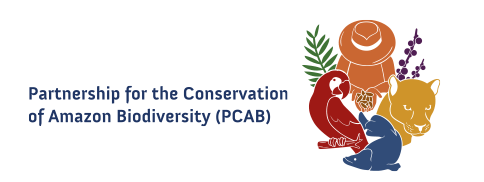Exchanging experiences on volunteering and shared management
In 2017, more than 2,000 volunteers provided support and time to 142 Protected Areas (PAs) managed by Instituto Chico Mendes de Conservação da Biodiversidade (ICMBio). The Volunteer Program in national parks, forests and reserves started in 2009 and covers 42% of National PAs. In the Amazon, it is working in 30 PAs spread across five states: Amazonas, Pará, Rondônia, Roraima e Acre.
To learn from the experience of the US Forest Service, which has organized an army of 2.8 million volunteers who have donated 123 million hours since 1972, valued at about US$ 1.4 billion of human resources; ICMBio’s staff were invited to technical visits in US Parks. Following this, In December ICMBio hosted US Forest Service Wilderness and Wild Scenic Rivers Program Manager for the Northern Region, Jimmy Gaudry, and the Director of Trail Operations of the Pacific Crest Trail Association, Jennifer Tripp, in Brazil. Jennifer is responsible for preserving, protecting and promoting a trail that crosses the West from Mexico to Canada and stretches for over 4,000 km. It can be explored by horse or by foot through Indigenous Reserves, National and State Parks, and counts on thousands of volunteers for its maintenance. These exchange visits were supported by the USFS under the PCBA.
During the international Seminar on Best Practices in Protected Areas, led by ICMBio, Jimmy Gaudry and Jennifer Tripp shared their perspectives, in the following interview:
USAID’s PCAB: How does this partnership work? Sharing management best practices for public lands?
Jimmy Gaudry: The US Forest Service pretty regularly engages volunteers and partners in helping us to manage and steward a variety of resources. Everything from recreational opportunities to monitoring, to research. We see value in that, not just because it helps gets work done, but because it connects the community to the landscape that belongs to them. And it also grows a community of support in the public: support for public land, support for the agencies and support for the work we do. In this day and age that is how we operate: Through partnerships and volunteers.
Jennifer Tripp: From the partner perspective, it is really important for the volunteers to get out on the public land, to embrace it. Not all agencies and partners are so excited to have volunteers come out and being able to show that we can help them to achieve their goals and their objectives. It shows value in having the volunteers out on the projects. The agencies are more and more interested in having volunteers as resources become more and more scarce. And having volunteers helping in many ways as possible is really important. Not only looking at them as labor working on the trails, but acknowledging that they have many skills to bring to the table – communications and other skills.
Civil society in the US seems to have a say in the management of public parks and trails. How does the USFS go about achieving that?
Gaudry: We have the National Environmental Policy Act (NEPA), which mandates that we engage the public whenever making any management decision. By law we do that, but through partnerships we also engage on a different level. It is not just about following a process to engage the public to get their input, but about connecting with another organization that has shared values, shared mission and a desire to see the best outcome for any given resource. In my case we are talking about long distance trails. So local people are at the table helping us to develop and grow the future management of those areas not only in the NEPA context, but in the day-to-day management decisions and engagement.
Tripp: Particularly in the National Trail System, which goes back to a Congressional law that says that partners will be involved as much as possible in the management, development and maintenance of those long distance trails, which is very unique in: calling out partners and volunteers to have a place at the table with the agencies. Not everything that USFS does has that strong language requiring us to involve partners. That is a unique piece of legislation in the USA.
Can you give us an example of how that works in practice?
Tripp: One example that we have is that people like to camp along the trail in places that are not appropriate. Too close to water, or not adequate surfaces. And they are finding these places because of apps that say: ‘There is a great camping site, camp here`. My organization and our volunteers are finding these campsite locations on the apps, going there and evaluating. If they are not appropriate, we go to the Forest Service with the information, and if it’s not a good place, we reach the app developers and ask them to remove that camp site. So, people don`t go there and camp in places that would affect water or damage the area. We are doing that in partnership with the USFS.
Gaudry: This is a good example, because it is not just bureaucracy. That agency is saying: `Hey, there is problem, we need to deal with it`. But there is actually the public voice saying “we think there is a problem, let’s deal with it”. In the end it makes it easier on us to implement something.
Click here to learn more about ICMBio’s Volunteer Program: (in Portuguese)

